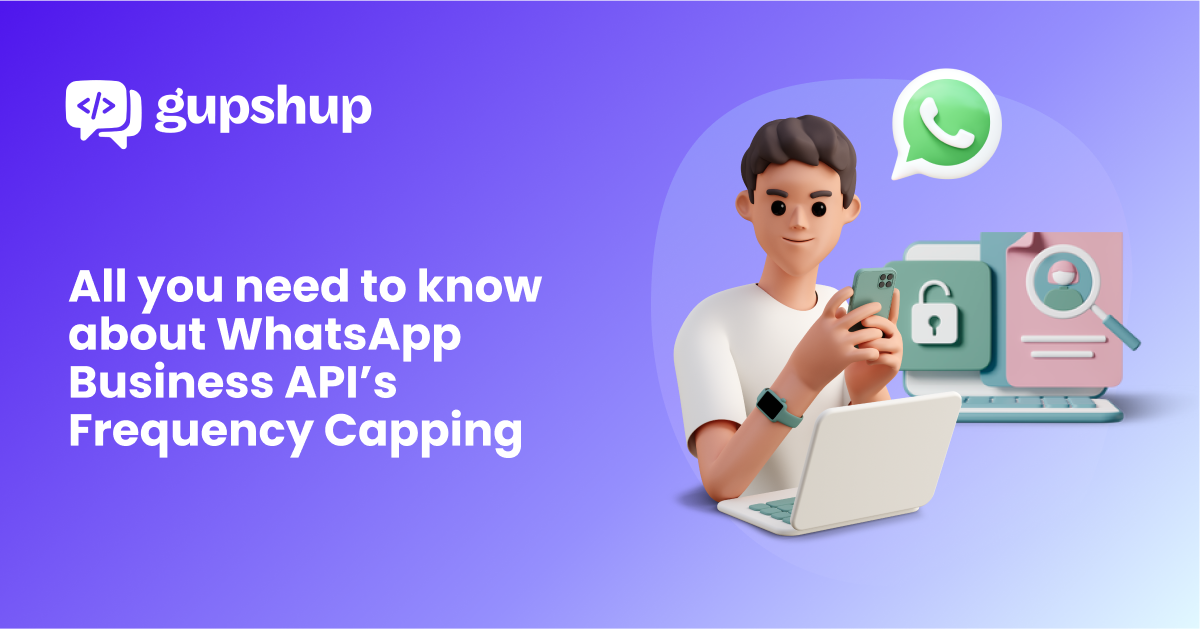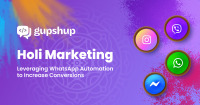All you need to know about Meta’s frequency capping on marketing messages

For all the businesses leveraging WhatsApp Business API for marketing and promotions, we have an update for you.
Meta, the company powering WhatsApp Business APIs, has introduced a new feature known as Frequency Capping. This feature alters the dynamics of business communication and necessitates a fresh look at your outreach strategies.
Get Acquainted with Frequency Capping:
Frequency Capping is a pro-user feature rolled out by Meta. This functionality limits the volume of marketing messages a WhatsApp user can receive within a specific timeframe, from across brands.
For instance, after the launch of frequency capping, the end user can only receive messages from a limited number of brands (e.g., ’15’) in a rolling 7-day window. The window is dynamically decided by Meta and cannot be shared with the end business to protect the channel’s user experience.
It’s also interesting to note, the set boundaries are not static. Meta dynamically alters them, thereby encouraging businesses to strategize their outreach smartly and thoughtfully.
The Motive Behind The Update:
The core aim of Frequency Capping is to enhance the user’s experience on WhatsApp by preventing a flood of marketing messages. However, businesses can benefit too. A refined, uncluttered message delivery may boost your communication’s overall impact as users would not feel bombarded.
Which Messages Are Affected By Frequency Capping:
Frequency Capping predominantly applies to promotional messages transmitted through WhatsApp Business API templates. However, not all communications are affected:
- Day-to-day customer interactions inside a 24-hour window remain untouched.
- Messages relating to your Click-to-WhatsApp advertisements are still permissible.
Rethinking Communication Strategy:
This update calls for a revision of your current WhatsApp marketing approach:
- Focus on quality over quantity. Prioritize sending messages that genuinely enrich your customer’s experience.
- Engage more profoundly with your customers through real engaging two-way conversations.
- Continually experiment and adapt your frequency based on real-time insights.
While these are uncertain times, with a lot about the capping algorithm hidden, overall, with frequency capping, businesses have the opportunity to step-up their creativity and leverage WhatsApp chatbots to forge stronger two-way conversational relationships and start looking at the user-initiated messaging strongly.
Frequently Asked Questions About Frequency Capping
What is Frequency Capping?
Frequency Capping is a new feature launched by Meta that limits the number of marketing messages that can be sent to a user in India within the span of one week.
Why did Meta introduce Frequency Capping?
Meta introduced Frequency Capping to address the message overload experienced by users, which leads to a lower Return on Investment (ROI) for Marketing Messages.
When do the per-user marketing template message limits take effect?
Beginning February 6, 2024, these limits are applicable to template messages sent to a select group of WhatsApp users in India. However, by February 13, 2024, Meta will extend to include all WhatsApp users possessing an Indian phone number.
Does Frequency Capping affect all users?
Frequency Capping affects only marketing messages to users in India (+91) country code.
Will session messages and CTWA retargeting campaigns be affected?
No, session messages and CTWA retargeting campaigns will remain unaffected by Frequency Capping.
What messages does the limit apply to?
The limit applies solely to marketing template messages that will open a new marketing conversation. If a marketing conversation is already active between business and a WhatsApp user, any marketing template messages sent to the user will not be affected by this limit.
Does the limit apply to messages that are a mix of utility and marketing?
Yes, messages with a blend of utility and marketing content may not get delivered, as they fall under the category of marketing messages.
What research has Meta conducted regarding Frequency Capping?
Meta has conducted data research and found that the delta affecting the number of messages that get capped will be very low, resulting in a low number of failed messages.
Remember, Frequency Capping is focused on the cumulative user experience, taking into account all marketing messages received from various businesses, not just yours. Adapt and grow with this exciting transformation, and remember to put your audience at the heart of your marketing initiative.

Blogs you will want to share. Delivered to your inbox.
Business Email
Recommended Resources
Read: It’s Holi: WhatsApp Marketing Strategies to Increase Conversions During the Festival of Colors



